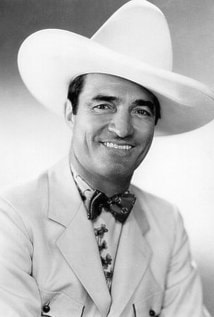The first motion picture cameras were invented in the 1890s but it was in 1902 that the full potential of movies was first realized. And the cowboy was there at the start.
The Great Train Robbery was only 12 minutes long but was considered a milestone in film-making history.
Written, produced, and directed by Edwin S. Porter, a former Edison Studios cameraman, it featured a number of what was at the time considered unconventional techniques.
Porter actually shot the film on location, not in a studio like previous films, and he moved the camera along with the action. He also used the technique of cross cutting, in which two scenes are shown to be occurring simultaneously but in different locations.
And, as if those were not unconventional enough, he hand-coloured some of the key scenes, decades before colour movies were developed.
The Great Train Robbery is considered to be the first American action film and the first western.
It was to be followed by countless thousands of westerns, featuring the ever-popular combination of action and romance.
Following the tradition of the dime novel and the wild west show, moving picture producers began to search for a hero that could exemplify the romantic image of the cowboy: a rugged man of the outdoors who rode to the defence of the oppressed.
They found him. Tom Mix was the first and, for many years, the greatest cowboy hero to grace the screen.
Beginning in 1909, he was in 291 films, all but nine of which were silent. Mix had been the town marshal of Dewey, Oklahoma and worked at a number of odd jobs in the Oklahoma Territory.
He found employment at the Miller Brothers 101 Ranch, one of the largest ranching businesses in the U.S.
The ranch had its own touring Wild West show in which Mix appeared. He stood out as a skilled horseman and expert shot, winning national riding and roping contests at Prescott, Arizona in 1909, and Canon City, Colorado in 1910.
Mix appeared in more than 100 films for the Selig Polyscope Company and soon became a motion picture star on the silent screen.
After the failure of the Selig company, Mix moved on to work for the Fox Film Corporation through the 1920s. The new company featured action-oriented scripts where heroes and villains were easily identified and a clean-cut cowboy always “saved the day.”
Millions of North American children grew up watching Tom Mix films on Saturday afternoons.
His intelligent and handsome horse Tony also became a celebrity. Mix did his own stunts and was frequently injured.
Other western cowboy heroes in the silent moves included Buck Jones, Fred Tompson, William S. Hart, and famous stunt man, Yakima Canutt, who we will hear about in a future column.
Through the entire silent movie era, Mix remained the quintessential cowboy and the model for all the movie cowboys who were to follow him.
The King of the Cowboys, as he was acknowledged in his heyday, was killed in a car accident in 1940 but his character, played by actors, was featured on radio programs into the 1950s.
Ken Mather is a Spallumcheen-based author. He can be reached through www.kenmather.com.Check out more Ranch Tales at http://www.vernonmorningstar.com/community/161503005.html
